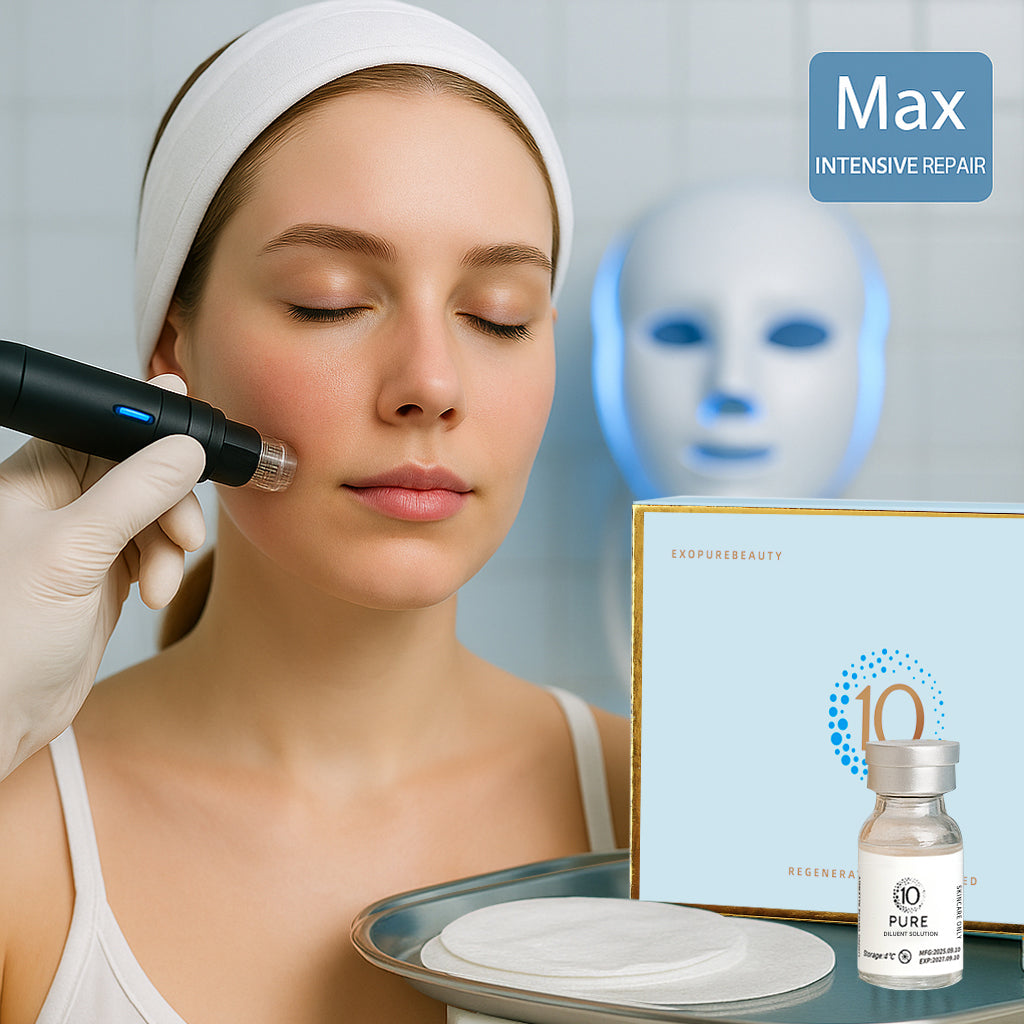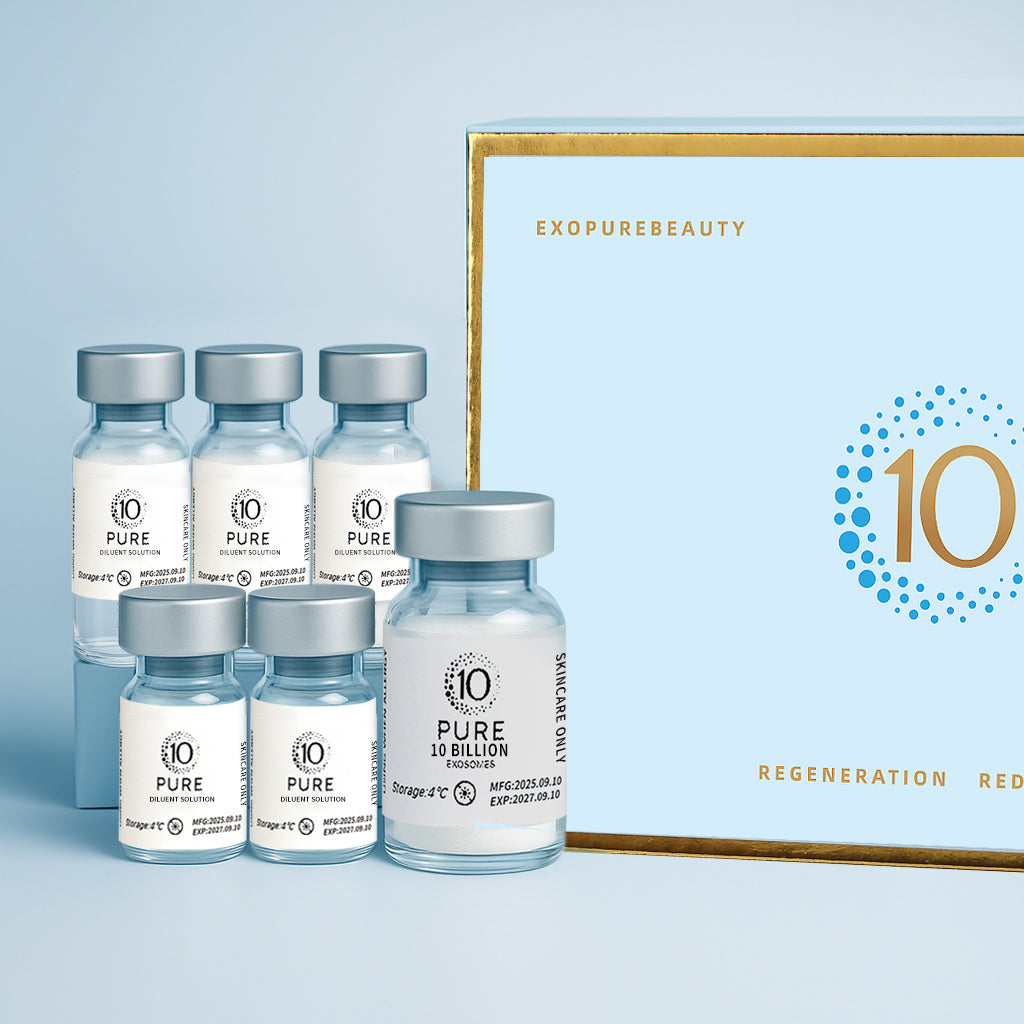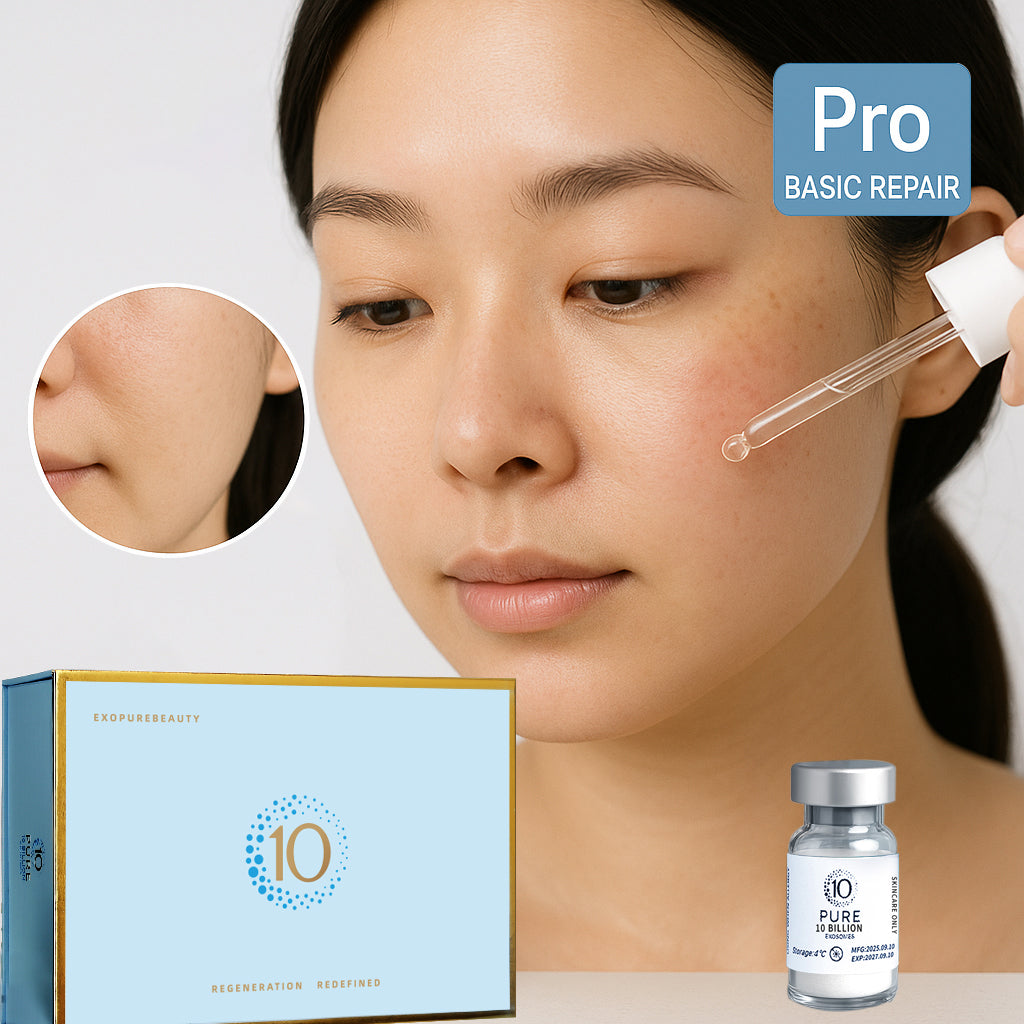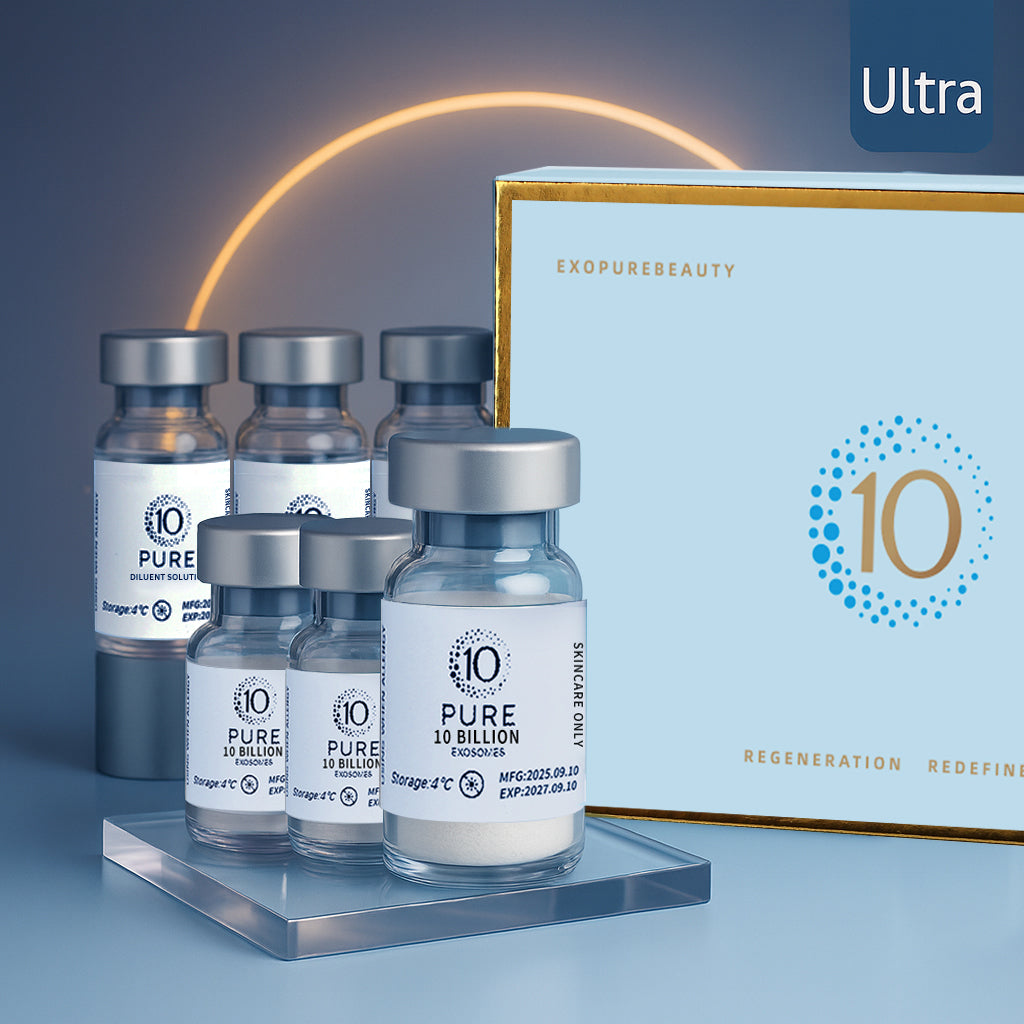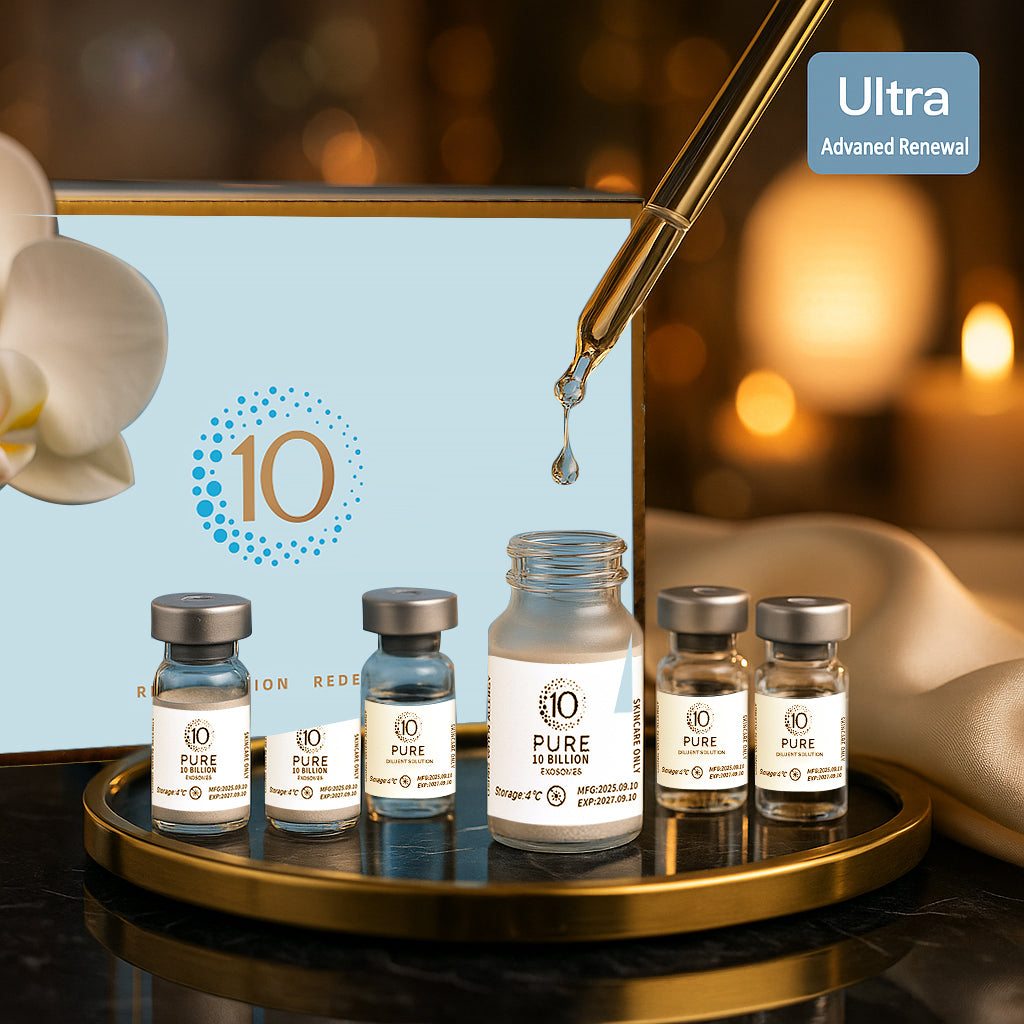2013’s Nobel Prize in Physiology or Medicine mapped the machinery of cellular vesicle trafficking—the playbook behind how we formulate and handle exosomes today. That’s why a little “opalescence” after reconstitution is expected, and why certain red flags mean you should stop and check.
A faint milky/opal look and a few tiny bubbles are usually normal: they come from Tyndall scattering in a nano-dispersion and small air pockets introduced during mixing. Let the vial stand for 1–2 minutes or gently invert 3–5 times and proceed.
Stop and contact support if you see marked discoloration (yellow–brown/green), unusual odor, heavy flocculent/filamentous sediment that won’t re-disperse, or broken seals/leaks.
Where the “milky look” & microbubbles come from
-
Nano-dispersion optics: EXO-Lyospheres™ are nanoscale vesicles. Once reconstituted they form a colloidal dispersion that scatters light (Tyndall effect), which reads as a soft opalescent haze rather than glass-clear water.
-
Air introduction: Even careful, wall-down addition and gentle inversion can trap microscopic air; temperature shifts may also release dissolved gases.
-
Buffer & isotonic system: Our paired diluent is isotonic, skin-friendly (weak-acid) pH, and gently buffered—no high-foaming surfactants—so a few bubbles can still appear and are within a normal visual range.
Normal vs. warning — quick check table
|
What you check |
Normal / Acceptable |
Stop + Escalate |
|---|---|---|
|
Appearance |
Faint opalescence / slight haze; a few small bubbles |
Yellow-brown/green discoloration; heavy floc/strings; grey/blackish supernatant |
|
Smell |
Nearly odorless or mild raw-material note |
Acrid, sour, musty, or “off” odor |
|
Mixing behavior |
Goes uniform after gentle inversion |
Rapid, persistent phase separation; settles hard and won’t re-disperse |
|
Packaging |
Seal intact, no leakage |
Loose cap, broken tamper ring, leakage, smeared/illegible label |
|
On-skin feel |
Brief, mild tightness/tingle that self-resolves |
Persistent burn, widespread swelling/redness, oozing, hives/angioedema |
If anything in the right column shows up, stop using it, note the LOT / Vial-ID / open time, take photos, and contact support.
Best practice: reconstituting & de-bubbling
-
Prep: Clean hands & surface. Use one freeze-dried vial + its paired diluent only (see Q29).
-
Add diluent: Down the vial wall slowly to the fill mark to avoid vortexing.
-
Mix: Gently invert 5–10× (do not hard-shake/foam).
-
Settle: Stand 1–2 min so microbubbles rise and break.
-
Apply: Within 0–60 min post-procedure, apply evenly → calming mask 10–15 min.
-
Use-once rule: One vial = one session. If you must split, refrigerate 2–8 °C and finish within 48 h (see Q11).
Common pitfalls → quick fixes
-
“The harder I shake, the better it mixes.” → No. Hard shaking adds foam and shear. Gentle inversion is enough.
-
“Looks a bit hazy—let me dilute with water/saline.” → Don’t. You’ll break pH/osmolality/buffer balance. Use the paired diluent only (Q29).
-
“I’ll heat/ultrasonic it to kill bubbles.” → No. Heat and strong energy add stress and contamination risk.
-
“It smells odd but I’ll still use it.” → Don’t. Odor change = red flag. Stop and report.
Why we stress freshness & traceability
-
Fresh-Batch 48h: We allocate the newest released lot within 48 hours, label each vial, and ship temperature-controlled—reducing storage-related appearance drift.
-
Per-vial traceability: Every vial carries LOT / Vial-ID / spec / dates. Scan to the Trace Page for that lot’s COA snapshot, temp records, and use tips—so you can judge “normal vs. not” with confidence.
FAQ
There are still a few tiny bubbles after settling—OK to use?
Yes. Proceed with dot-apply + gentle press; it doesn’t affect topical use.
I see light sediment that fully re-disperses after inversion—safe?
If it fully re-disperses and there’s no odor/discoloration, it’s typically acceptable. If sediment is stubborn or accompanied by odor/color change, stop and report.
Can I draw with a syringe to avoid bubbles?
We don’t recommend cross-container transfers—they increase contamination risk. Apply from the vial/dropper with minimal contact.
Compliance footer (site-ready)
This is a cosmetic product intended for surface-level soothing, hydration, and barrier support—not for diagnosing, treating, or preventing disease. Mild opalescence and a few microbubbles are normal. Discontinue use and consult a professional if you notice discoloration, off-odors, stubborn sediment, or if you experience persistent or worsening irritation.
One-line wrap
Opalescence ≠ problem—it’s physics. Odor, color shift, or stubborn deposits = red flags. Follow “gentle invert → brief settle → same-day use,” plus the one-vial/48-hour rule, and you lock in freshness, hygiene, and consistent feel.
Read more
Only use the paired diluent. “Looks-fine” substitutes aren’t fine. 2013’s Nobel Prize in Physiology or Medicine decoded cellular “vesicle trafficking.” That blueprint informs how we handle exosome...
Follow the “Low-Heat, Low-Power, Controllable” rule The 2013 Nobel Prize showed how cells ship cargo in tiny vesicles. That playbook lets us understand and control exosome production and release, o...


